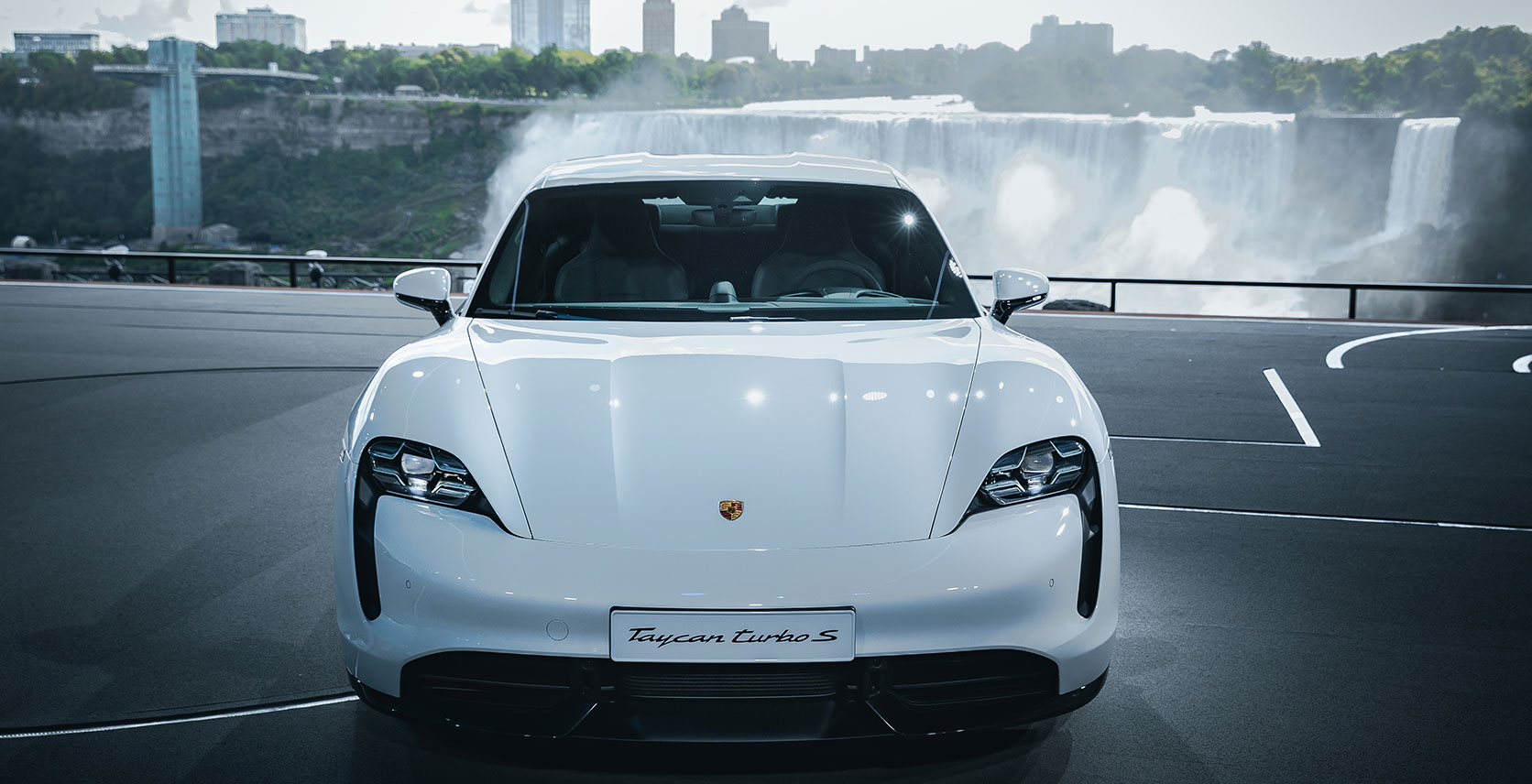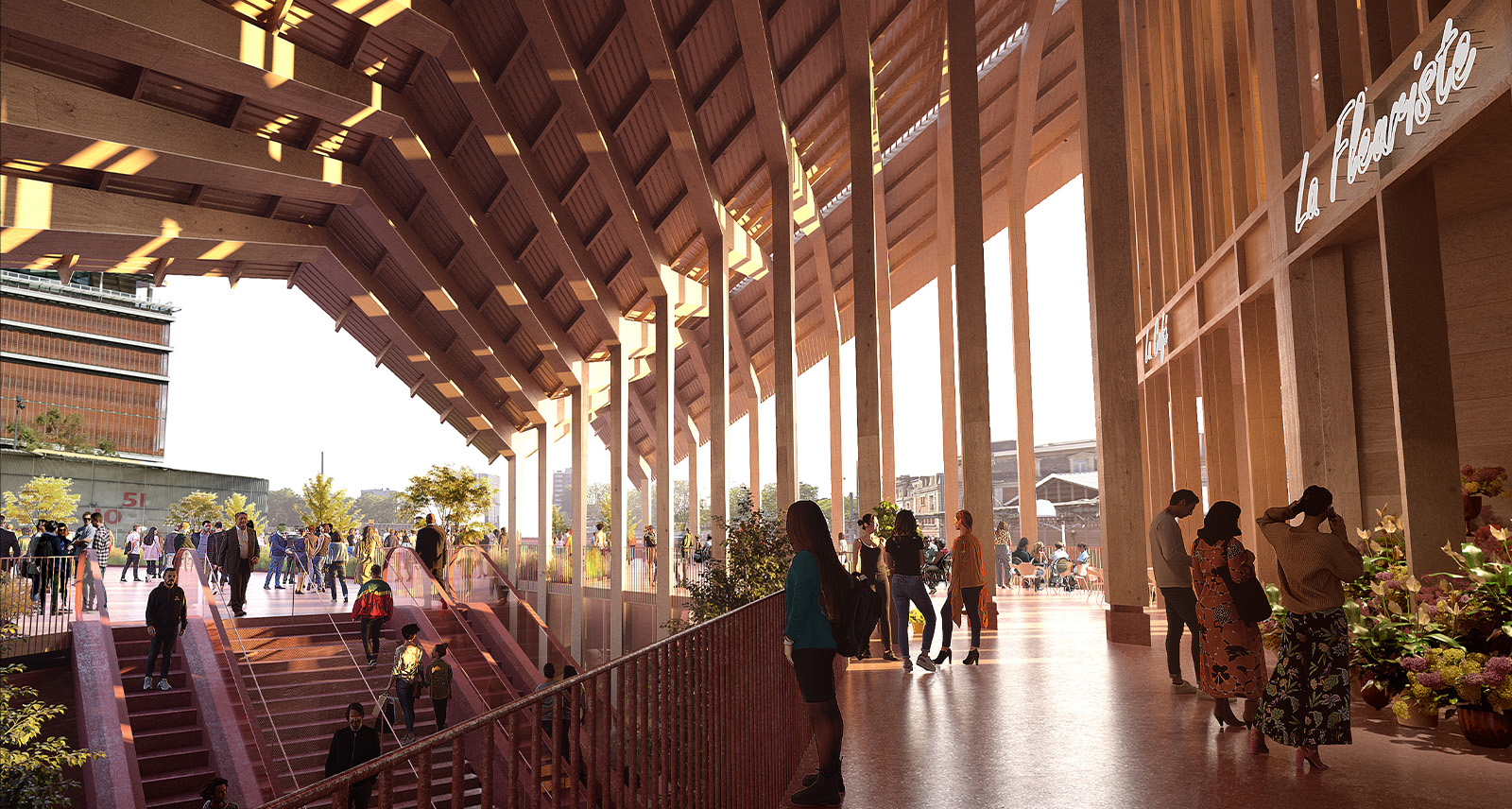Porsche’s All-Electric Taycan Upstages Even Niagara Falls
The first thing we learned at the North American unveiling of the Taycan, Porsche’s first all-electric sedan, is that we had been mispronouncing its name. We should have known better. Given that the car is ushering in an entirely new era for the German automaker, it’s only appropriate that “Taycan” should rhyme with “icon.”
The car’s unveiling was appropriately monumental, too, with the EV introduced on a stage in front of screens that slid away to reveal one of nature’s ultimate wonders: Niagara Falls, a significant source of hydroelectric power. This North American premiere coincided with two other reveals occurring simultaneously in Berlin and China in front of other sources of renewable energy: a solar site and a wind farm, respectively. Welcome to the age of the all-electric Porsche — the result of a $6.6-billion investment that includes the construction of an entirely new factory in Stuttgart.
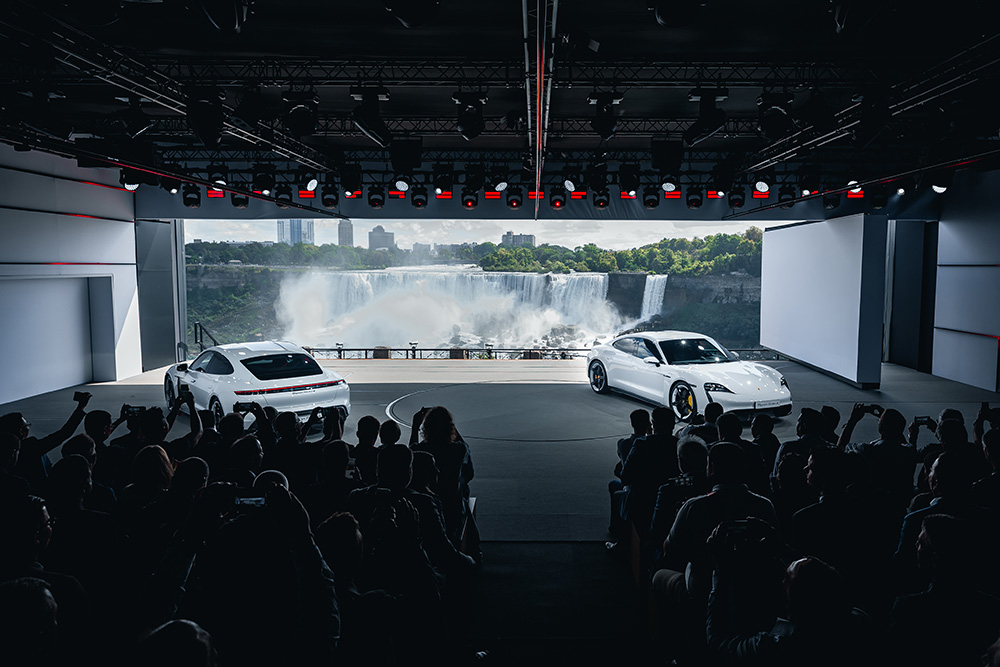
An evolution of the Mission E concept first shown in Frankfurt back in 2015, the Taycan is not just a first for Porsche — it also introduces innovations entirely new to the electric industry, all in a bid to unseat Tesla as the king of the EV market. To wit, the car’s battery can charge with 800 volts rather than the more common 400, which means under ideal conditions the car will charge to 80% in just over 20 minutes. Porsche dealerships are in the process of installing onsite charging stations, and the VW Group is also one of the partners behind Electrify Canada, which is bringing 32 DC fast-charging stations to BC, Ontario, Quebec, and Alberta over the next year. Between charges, the Turbo model boasts a range of 450 kilometres, while the Turbo S model, which ups the horsepower from 670 to 750, will cover 412 kilometres — in other words, already far enough to comfortably make the trip from Toronto to Muskoka.
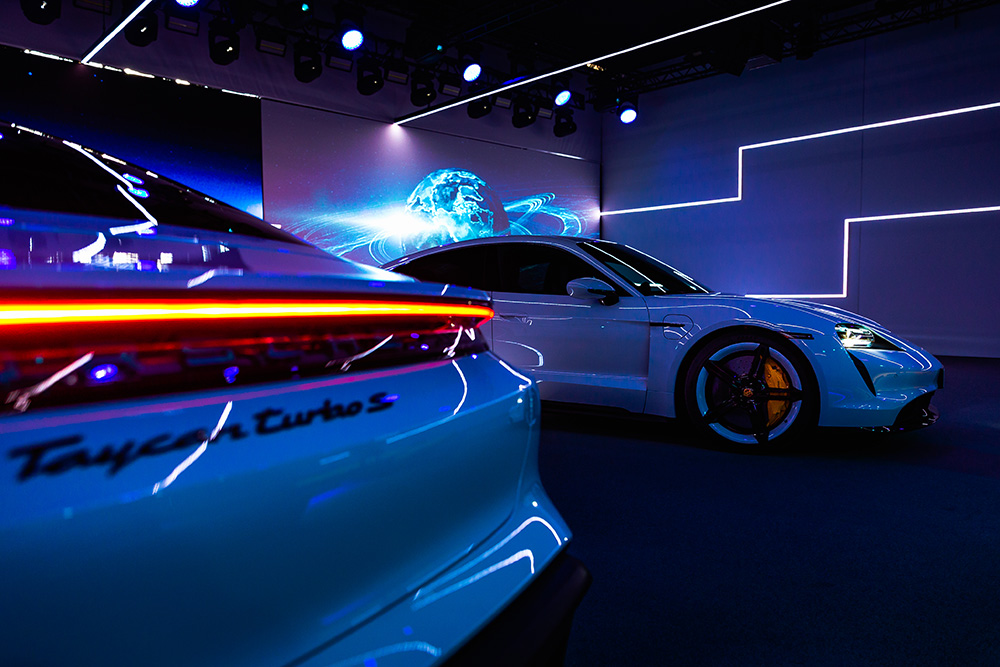
Other elements impress even outside of the realm of EVs, with a 0.22 drag coefficient making the Taycan one of the most aerodynamic cars on the market. Meanwhile, its twin electric motors — one at the front and one at the rear — take the Turbo S from 0–100 km/h in 2.8 seconds. It’s all part of Porsche’s effort to transplant the zippy soul of their sports cars into an entirely new package
Complementing the wide shoulders, arced curves, and rear horizontal light strip of the exterior, the interior feels suitably futuristic without veering into the realm of science fiction. A curved 16.8-inch driver display is polarized to prevent glare, while a 10.9 inch central console includes direct Apple Music integration and an 8.4-inch panel console panel incorporates the Virtual Airflow Control functionality first introduced on the Panamera. An optional co-driver screen lets passengers make their own entertainment selections without distracting the driver.
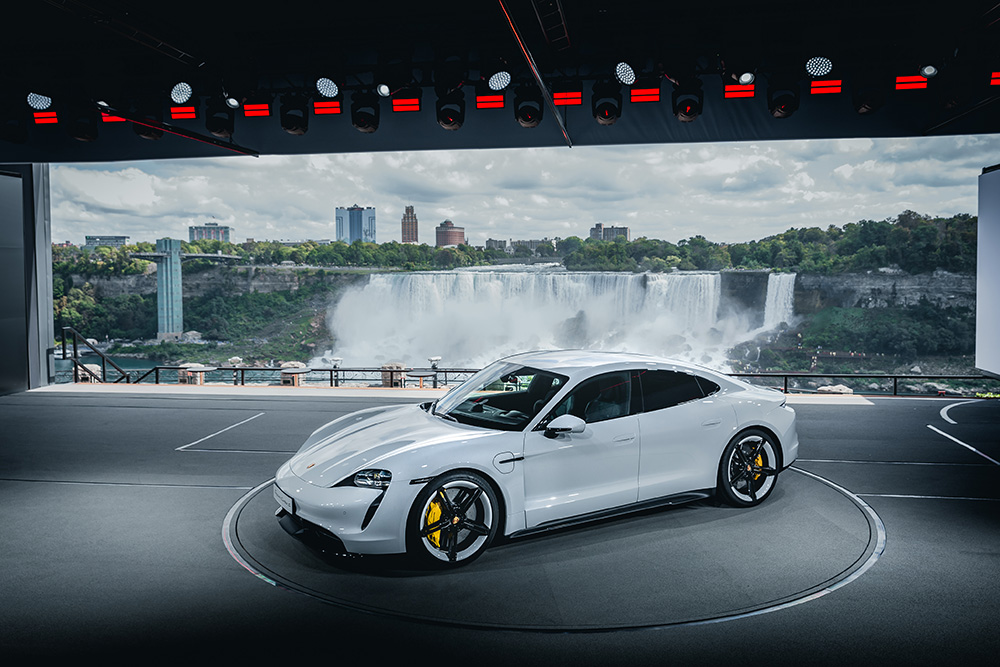
All of this to say, the preview event got us even more excited than we already were to get behind the wheel of Porsche’s gamechanger. It might run steep — the base Turbo model starts at $173,900, while the Turbo S model runs $213,900 — but the future waits for no man’s bank account. Deliveries are expected to begin before the end of the year.
